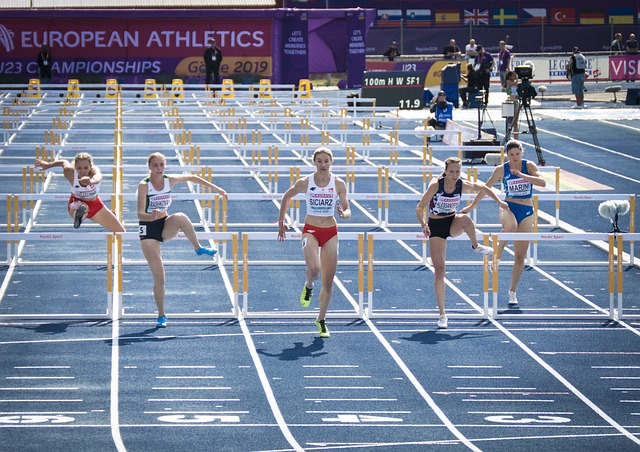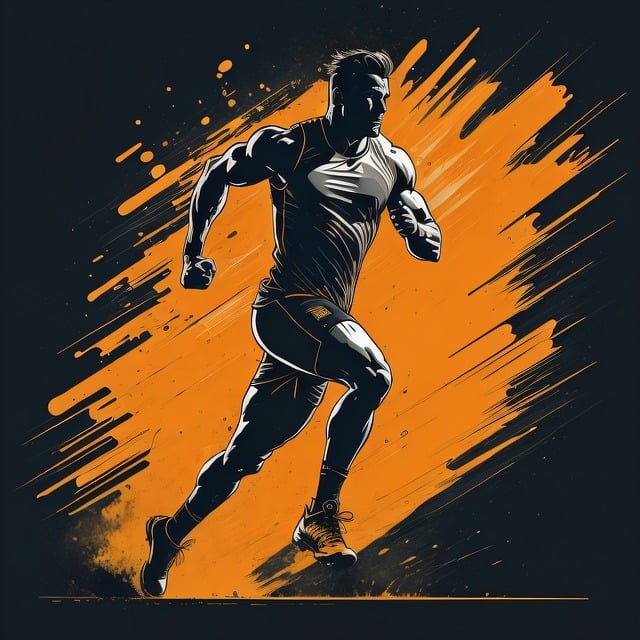Athletes are increasingly utilizing advanced non-invasive medical techniques to manage pain and accelerate recovery, avoiding surgery. These include cryotherapy for muscle soreness and inflammation reduction, low-level laser therapy for cellular repair and pain relief in injuries, and wearable technology for monitoring biometrics and preventing injuries through data-driven training adjustments. Regenerative medicine, with treatments like PRP and stem cell therapies, leverages the body's own healing processes to address acute and chronic pain, enabling a faster return to sports with minimal downtime. Wearable tech enhances safety by providing real-time feedback on physiological states, tailoring recovery and training regimens to individual needs. These innovations collectively represent a significant advancement in athlete medical care, ensuring well-being and optimizing performance throughout the rigorous demands of training and competition.
Athletes at all levels are constantly seeking ways to enhance their performance and accelerate recovery from injuries or intense training. This article delves into cutting-edge non-invasive solutions that are transforming athletic recovery, offering a glimpse into the future of sports medicine. We explore the integration of regenerative medicine for managing athlete pain, the therapeutic benefits of cryotherapy in reducing injury risk, and the role of low-level laser therapy in promoting healing and improving performance. Additionally, we examine how wearable technology is revolutionizing real-time medical monitoring for athletes. Join us as we uncover these advancements that are set to redefine recovery protocols in the athletic realm.
- Optimizing Athlete Recovery: The Role of Non-Invasive Medical Techniques
- Advancements in Athletic Healing: A Look at Regenerative Medicine for Athlete Pain Relief
- Cryotherapy: Harnessing Cold Therapy to Accelerate Athlete Recovery and Reduce Injury Risk
- The Impact of Low-Level Laser Therapy on Athlete Healing and Performance Enhancement
- Leveraging Wearable Technology for Real-Time Monitoring and Management of Athlete Medical Concerns
Optimizing Athlete Recovery: The Role of Non-Invasive Medical Techniques

Athletes are constantly seeking ways to enhance their performance and recovery processes. Non-invasive medical techniques play a pivotal role in this pursuit, offering effective pain management for athlete pain without the need for surgery. Techniques such as cryotherapy and laser therapy have gained popularity for their ability to reduce inflammation and accelerate the healing process. For instance, cryotherapy involves exposing the body to extremely cold temperatures for short periods, which can help in managing muscle soreness and improving overall recovery times. Similarly, low-level laser therapy employs specific wavelengths of light to stimulate cellular repair mechanisms, thereby alleviating pain and promoting faster healing in injured tissues. These modalities not only contribute to the well-being of athletes but also allow them to train more effectively by minimizing downtime due to injury or fatigue.
The integration of advanced recovery technologies into athletic training regimens has become a cornerstone for elite performance. Non-invasive medical techniques such as electrical stimulation and ultrasound therapy are employed to address various conditions affecting athletes, from acute injuries to chronic pain issues. Electrical stimulation, for example, can enhance the function of nerves and muscles, leading to improved circulation and accelerated recovery. Ultrasound therapy, on the other hand, utilizes sound waves to penetrate deep into the tissues, promoting increased blood flow and aiding in the removal of metabolic waste products. These treatments are non-invasive, have minimal side effects, and can be tailored to the specific needs of each athlete, making them an indispensable part of modern sports medicine.
Advancements in Athletic Healing: A Look at Regenerative Medicine for Athlete Pain Relief

Athletes are constantly pushing the boundaries of human performance, often leading to physical strain and subsequent pain. Traditional recovery methods have been the mainstay in managing athlete pain, but regenerative medicine is now at the forefront of providing non-invasive solutions for faster athletic recovery. This cutting-edge field utilizes advanced techniques such as platelet-rich plasma (PRP) therapy and stem cell treatments to accelerate the body’s natural healing process. These treatments harness the athlete’s own biological components, ensuring a personalized medical approach with minimal downtime. The therapeutic potential of regenerative medicine is exemplified in its ability to address conditions ranging from acute injuries to chronic pain without the need for extensive surgeries, allowing athletes to return to their sport more quickly and with improved performance outcomes. As such, regenerative medicine stands as a beacon of innovation in the realm of athlete medical care, offering new hope for those seeking effective pain relief and rapid recovery.
Cryotherapy: Harnessing Cold Therapy to Accelerate Athlete Recovery and Reduce Injury Risk

Athletes often push their bodies to the limit in pursuit of peak performance, which can lead to musculoskeletal pain and injuries. Cryotherapy emerges as a non-invasive solution that has garnered attention in athletic medical circles for its role in accelerating recovery and mitigating injury risks. This treatment involves exposing the body, particularly the affected areas, to extremely cold temperatures for a short duration, typically between one to four minutes. The process triggers vasoconstriction, reducing blood flow to the treated area, which in turn helps to decrease inflammation and swelling, a common source of athlete pain. Additionally, cryotherapy is believed to stimulate the release of endorphins, acting as a natural analgesic that can aid in managing post-exercise soreness. By incorporating this cold therapy into their recovery protocols, athletes can potentially reduce their reliance on pharmacological interventions, leading to safer and more effective pain management strategies. This non-invasive approach not only expedites the healing process but also enhances the overall athletic medical care regimen by promoting a quicker return to training and competition.
The Impact of Low-Level Laser Therapy on Athlete Healing and Performance Enhancement

Athletes often face the challenge of recovery from injuries or intense training sessions, which can significantly impact their performance and overall health. Low-Level Laser Therapy (LLLT), also known as cold laser therapy, has emerged as a non-invasive solution that promotes athlete healing by stimulating cellular repair processes through photobiomodulation. This modality targets specific areas of injury or inflammation, leading to accelerated tissue repair and pain relief for athletes suffering from conditions like muscle strains, ligament sprains, or joint pain. The therapeutic laser emits light at specific wavelengths, which can penetrate deep into the tissues without causing damage to surrounding cells. This non-surgical treatment not only aids in reducing recovery time but also enhances the athlete’s performance by enabling a faster return to training and competition. Studies have shown that LLLT can effectively decrease pain and inflammation, increase circulation, and accelerate tissue repair, making it an essential tool in the athlete medical arsenal for those aiming to maintain optimal performance levels.
Leveraging Wearable Technology for Real-Time Monitoring and Management of Athlete Medical Concerns

Athletes are constantly pushing their bodies to the limits in pursuit of peak performance. Consequently, managing pain and preventing injuries is paramount for maintaining optimal athletic recovery. Wearable technology has emerged as a game-changer in this domain, offering real-time monitoring and management of athlete medical concerns. These advanced devices can track biometric data such as heart rate, skin temperature, and stress levels, providing immediate feedback that enables athletes to recognize the onset of pain or potential injury early. This proactive approach allows for timely interventions, reducing the risk of more severe injuries and ensuring that recovery is as swift and effective as possible. Additionally, the data collected by wearable technology can be analyzed to tailor personalized training regimens, avoiding activities that could exacerbate existing conditions or lead to new ones. As a result, athletes can enjoy a longer and healthier career without compromising their performance on the field. The integration of these technologies into athletic training protocols underscores a significant shift towards more informed and responsible athlete medical management, ultimately enhancing safety and promoting faster recovery times.
In conclusion, the field of athletic recovery is rapidly evolving, with non-invasive solutions playing a pivotal role in enhancing healing processes and minimizing injury risks. From the strategic deployment of regenerative medicine for athlete pain relief to the therapeutic benefits of cryotherapy, these advancements offer promising avenues for athletes seeking faster recovery times without the need for surgical intervention. The integration of low-level laser therapy and wearable technology further empowers athletes and medical professionals to closely monitor and effectively manage medical concerns, ensuring peak performance and well-being. As these non-invasive techniques become more accessible and widely adopted, we can anticipate a significant shift in the approach to athletic medical care, with a focus on rapid recovery and long-term health sustainability for athletes at all levels.
